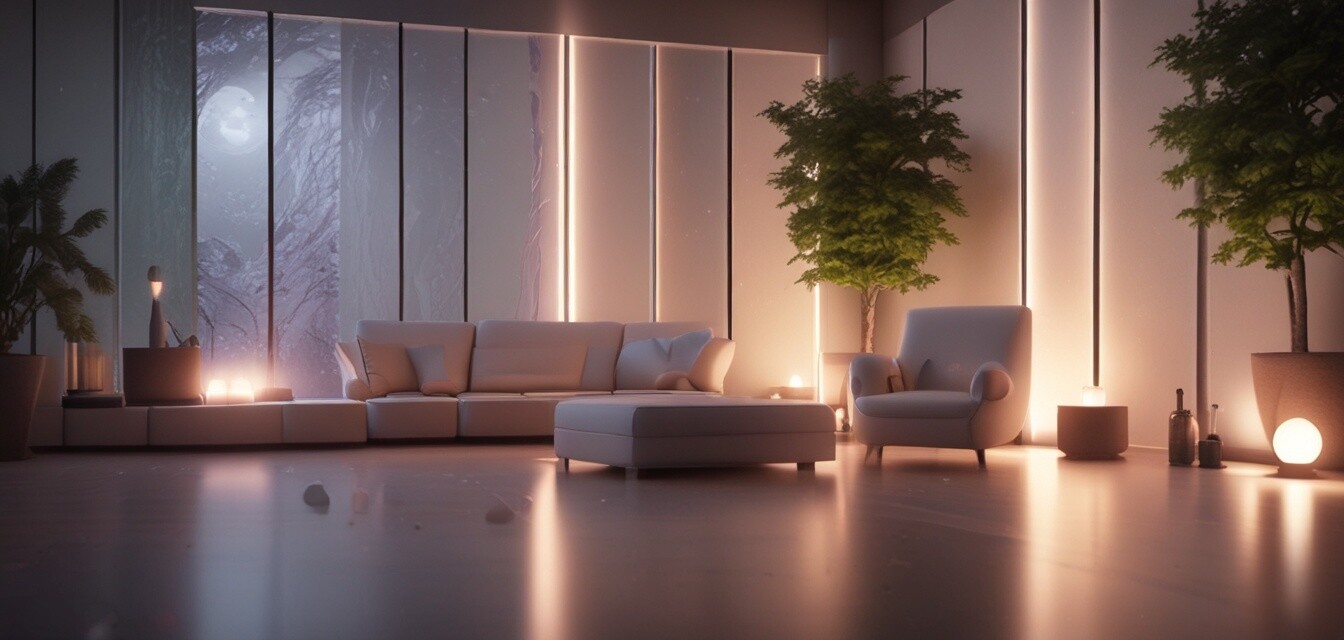
Engaging the senses: Creating a multi-sensory space
- Incorporating sight, sound, touch, and scent can enhance relaxation.
- Use essential oils and aromatherapy for scent.
- Soft lighting and calming colors can create a soothing atmosphere.
- Incorporate tactile elements like soft fabrics and comfortable seating.
- Utilize soundscapes—nature sounds or soft music enhance the experience.
Creating a multi-sensory space can be a transformative experience, allowing you to enhance relaxation and wellness at home or in the office. Engaging all your senses strategically can lead to a peaceful environment that promotes tranquility. In this article, we’ll explore various ways to engage the senses to foster a more calming space.
The importance of a multi-sensory space
A multi-sensory environment not only aids in relaxation but also improves your overall well-being. Engaging sight, sound, touch, and scent can help in managing stress levels. Creating such environments encourages mindfulness and helps re-establish a sense of calm. Here’s how you can get started:
Engaging the senses
1. Sight: Creating an inviting atmosphere
Visual stimuli can greatly affect our mood and sense of relaxation. Here are some key elements to consider:
| Elements | Description |
|---|---|
| Lighting | Soft, warm lighting can create a cozy and welcoming environment. |
| Color | Choose calming colors like blues, greens, or soft earth tones. |
| Decor | Utilize nature-inspired decor such as plants or scenic artwork. |
2. Sound: Creating a soothing atmosphere
Sound can significantly enhance the sensory experience. Here are some suggestions:
- Opt for nature sounds, such as rain or ocean waves.
- Consider soft instrumental music or sound therapy playlists.
- Use white noise machines to mask distractions.
3. Touch: Incorporating tactile elements
The sensation of touch plays a considerable role in creating comfort. Consider the following:
- Choose soft fabrics for pillows and throws to enhance coziness.
- Include comfortable seating options, such as cushions or bean bags.
- Use textured surfaces, like a woven rug, to add depth.
4. Scent: Utilizing aromatherapy
Scent can evoke emotions and memories. Here are some ways to integrate scent into your space:
- Use essential oils through diffusers to disperse calming aromas.
- Consider scented candles for a warm glow and pleasant fragrance.
- Utilize potpourri or incense for a continuous scent presence.
5. Taste: Enhancing the overall experience
While taste may not seem directly related, its incorporation can enhance a multi-sensory space:
- Keep herbal teas or infused water available to sip on.
- Utilize healthy snacks that are visually appealing and satisfying.
Creating your multi-sensory space
To create your space, consider these practical steps:
- Designate a specific area that will be your sensory retreat.
- Decide on the type of ambiance you want: calming, energizing, or uplifting.
- Curate items that cater to each of the senses, integrating them thoughtfully.
- Test different arrangements and adjust as necessary to find your ideal setup.
Embedding wellness tools
In addition to sensory-focused elements, it’s beneficial to incorporate wellness tools into your space. These can include:
- Aromatherapy products for added scent and atmosphere.
- Massage tools for physical relaxation.
- Sleep aids to promote better rest.
- Wellness supplements to support overall health.
Conclusion
Creating a multi-sensory space is an excellent way to promote wellness and relaxation. By thoughtfully engaging your senses through sight, sound, touch, and scent, you can create an environment that fosters serenity and mindfulness. Don't forget to consider the various wellness tools that can enhance your experience further and elevate your well-being. Take small steps today to establish your perfect sanctuary, one sensory element at a time!
Tips for enhancing your multi-sensory experience
- Experiment with different scents and sounds to find what resonates with you.
- Keep your space tidy and organized to avoid distractions.
- Regularly refresh your sensory items to keep the environment dynamic.
- Engage in mindfulness exercises to deepen your experience.
- Create a schedule to regularly retreat to your sensory space for relaxation.
